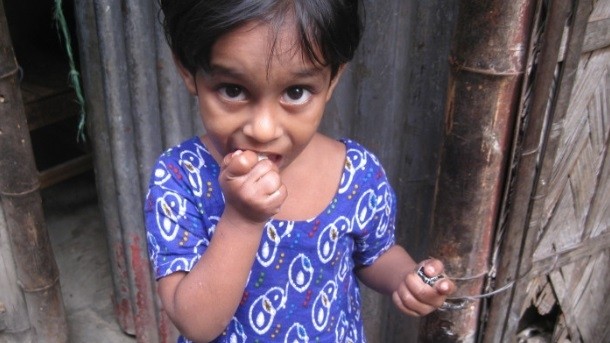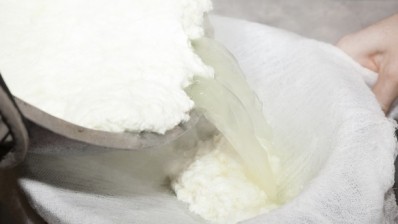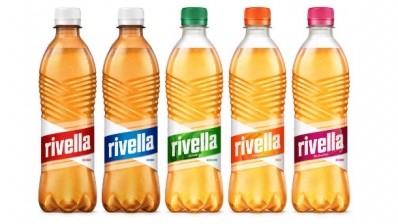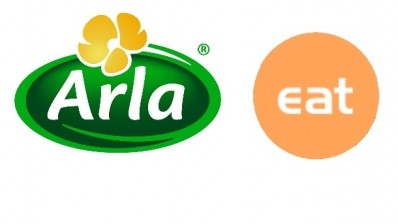Whey ingredients help malnutrition treatment: study

Published in the American Journal of Clinical Nutrition, the study summarizes the findings from trials conducted by US-based food aid organization Project Peanut Butter in Malawi and Mozambique.
Over the course of 21 months, more than 2,200 children aged six months to 59 months were enrolled for the study after being diagnozed with moderate acute malnutrition. During a treatment period of up to 12 weeks, the children received either an RUSF with soya protein or a novel RUSF with whey permeate and whey protein concentrate.
Use of RUSF
Charlotte Sørensen, senior project manager at Arla Foods Ingredients, told DairyReporter that the United Nations Refugee Agency (UNHCR) uses RUSF products to manage moderate acute malnutrition of children.
The UNHCR document, ‘Guidelines for selective feeding: the management of malnutrition in emergencies’ says little is known about the nutrient requirements of children with moderate acute malnutrition.
A technical committee has been formed to review their needs. Until the committee provides guidelines, various forms of RUSF that have been developed based on anecdotal evidences are being used for the management of moderate acute malnutrition.
Some of these new foods are more expensive per metric tonne than blended cereals, but their possible greater clinical effectiveness is expected to have a greater impact on mortality and morbidity, according to the UNHCR guidelines.
The document says RUSF are advantageous as they do not require additional water or fuel to cook the product and have a low microbial count and longer shelf life than fortified blended foods (FBF).
Developing RUSF for widespread use
The new Malawi new study, Sørensen said, is an example of research for developing a novel RUSF that is affordable for widespread usage.
When asked if companies share their technologies and formulae in the interest of helping save lives, Sørensen said, “Arla Foods Ingredients is supporting WHO’s call for more research into the efficacy of supplementary foods by contributing whey ingredients and expertise to several research projects.”
Higher rate of recovery
In the study, recovery was evaluated by measuring the circumference of the children’s mid-upper arm. This showed that children who received the novel whey-containing RUSF had a recovery rate of 83.9% - significantly higher than the 80.5% recovery rate of children who received the soya-containing RUSF. A higher growth rate was also recorded among the children in the whey-containing RUSF group.
The novel RUSF contains 33% less total protein and almost 8% less total energy than the soy-containing RUSF – and the study found that an improved recovery rate can be achieved at very little extra cost.
Animal protein better than plant
The findings support indications from previous studies that dairy protein improves recovery outcomes in undernourished populations when compared with plant-based protein.
Sørensen said the WHO currently recommends supplementation with high-quality protein of animal origin for treatment of moderate acute malnutrition in children.
“Such high-quality foods enable children to consume and maximize the absorption of nutrients in order to meet their requirements for energy and all essential nutrients,” she said.
“Animal-sourced proteins are more likely to meet all of the amino acid needs of recovering children. Plant-based foods, in particular legumes or a combination of cereals and legumes, also have high-quality proteins. But they also contain some anti-nutrients such as phytate or tannins, which may limit the absorption of some micronutrients, particularly minerals.”
How key is the lactose in whey?
One of the reasons for this improvement could be the content of lactose in whey protein and whey permeate, which is around 10% and 85% respectively. Naturally present in both bovine and human milk, lactose is also the primary energy source for breastfed infants.
Another study led by the University of Copenhagen has investigated the effects of lactose in the treatment of undernourished children. The study, which has been published in the Food and Nutrition Bulletin, reviewed and collated the findings of previous human and pig studies.
In its conclusion, the paper points to the prebiotic effect of lactose, which supports the development of a healthy gut microflora, and a positive contribution to mineral absorption. Both represent possible health benefits for young children.
Few problems with lactose intolerance
Even in populations with a high incidence of lactose intolerance, it was found that most undernourished children tolerate the low lactose content of therapeutic foods. In other words, they are able to benefit from lactose without symptoms.
Only a small group of severely undernourished children may react to lactose due to an intolerance brought about by severe diarrhoea or poor intestinal health. For this reason, more research is necessary to determine the right balance of lactose in therapeutic food for undernourished children depending on their age and health status.
The American Journal of Clinical Nutrition study was funded by the Danish Dairy Research Foundation, Arla Foods Ingredients Group P/S, and the US Dairy Export Council. It was supported by the Children’s Discovery Institute of Washington University in St. Louis and St. Louis Children’s Hospital.
GAIN partner
In 2014, Arla Food Ingredients joined other international companies, NGOs and knowledge institutions in the GAIN Nordic Partnership, part of the Global Alliance for Improved Nutrition (GAIN).
The ambition of the group is to develop affordable and nutritious foods in partnership with local manufacturers. Arla’s initial focus is the dairy value chain in Ethiopia.
Sørensen said the GAIN Nordic Partnership is a multi-sector platform with the aim of facilitating scalable and inclusive business models that enhance the nutritional value of food in developing countries. The platform brings together companies, civil society, academia and the public sector to bridge knowledge and goals.
Sources:
Including whey protein and whey permeate in ready-to-use supplementary food improves recovery rates in children with moderate acute malnutrition: a randomized, double-blind clinical trial
Stobaugh et al, American Journal of Clinical Nutrition, February 2016
‘Undernourished Children and Milk Lactose’
Grenov et al, Food and Nutrition Bulletin, February 2016.












